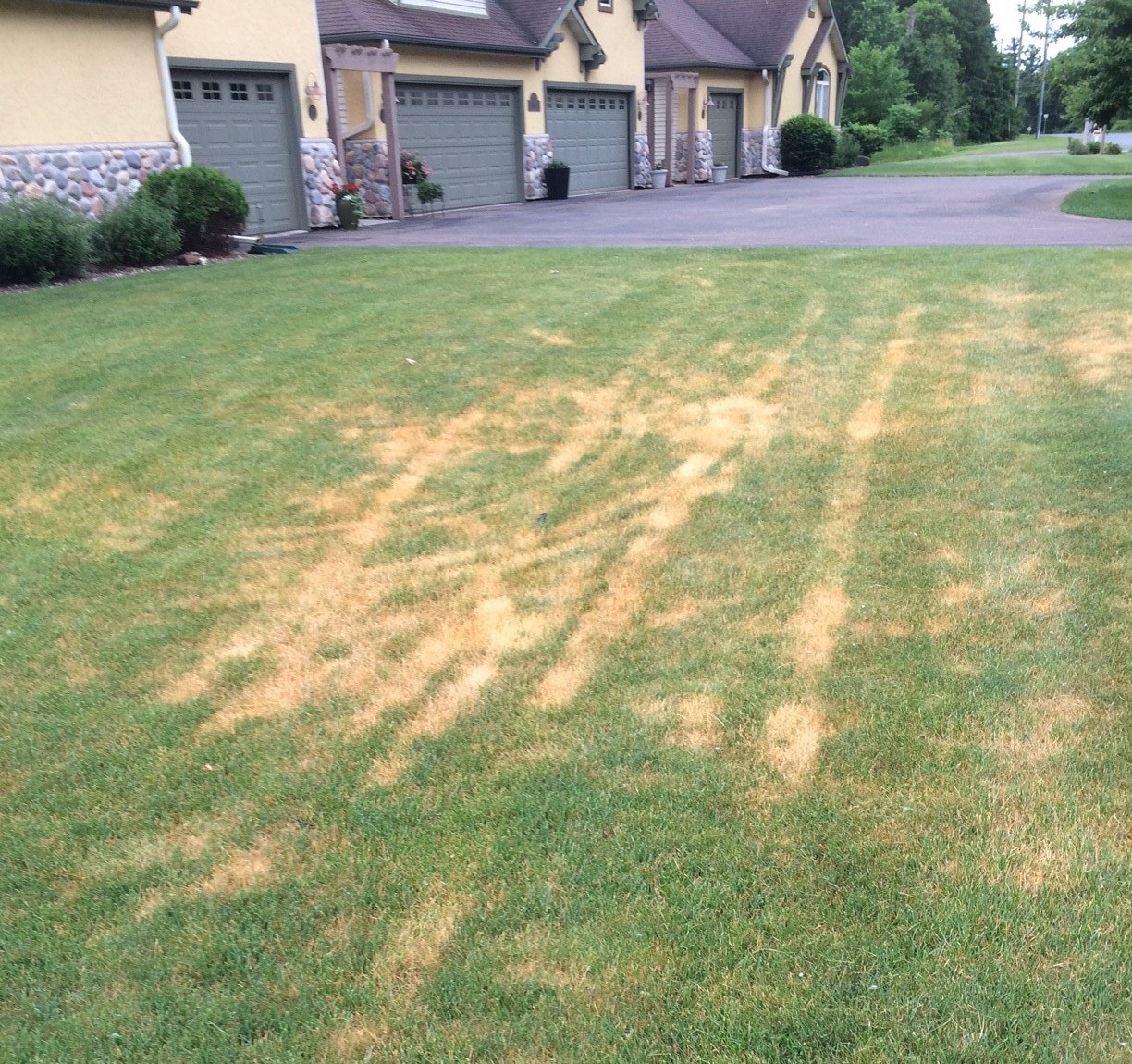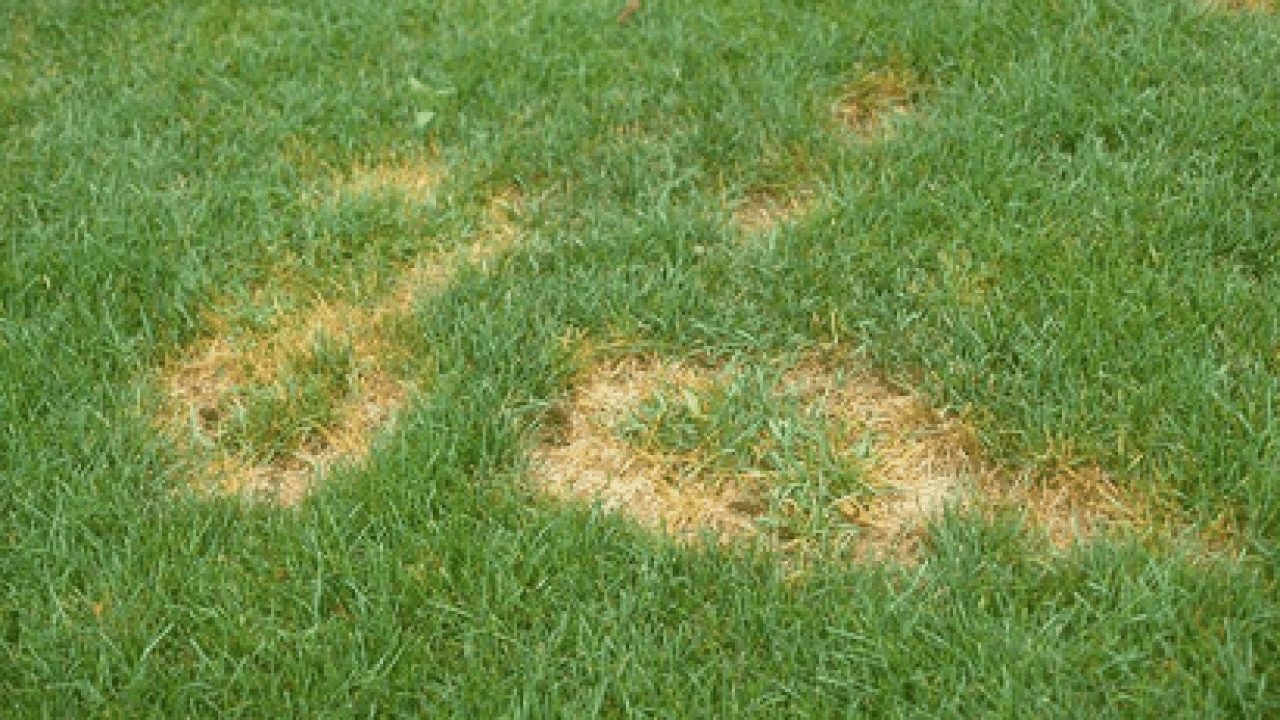Do you see bleached tracks on your lawn that typically follow the path of your mower? It could be Ascochyta Leaf Blight, which is a grass fungus that is found primarily on Kentucky Bluegrass, the most common grass in Iowa. This disease causes irregular patches of straw-brown color and will make your grass appear dead. This can pop up overnight, having a great looking lawn one day and a streaky yellow lawn the next. Weather can have a factor in it as well, as it is typically preceded by wet weather that turns hot and dry. You will start seeing these damaged lawns near the beginning of June, but they can also occur anytime throughout the summer.
This is a foliar disease that kills the leaf tissue, not the root system. This also means that the disease is transferred by infectious spores that sit on the surface of the grass. The “dead” patches are commonly seen where your mower tires track because your tires will easily spread the spores as you mow your lawn. Given that the outbreaks are so random, you typically won’t notice your lawn is affected until after the patches are already there. Once they appear, there is little you can do to make them go away. The good news is that recovery should only take 3-4 weeks, depending on how the growing conditions are over that time. There also are some practices you can perform regularly to relieve stress on your lawn and lessen your chances of a yellow, patchy lawn appearing overnight.
The four main cultural practices you can do properly for a stress-free lawn are: fertilizing, mowing, watering, and core-aerating. If you haven’t already, please consider our Weed and Feed fertilizing program. We apply the best products available in the correct amount at the right time. Mowing frequency, height of cutting, and blade sharpness are very important. Please be sure 2.5” – 3” of height remains after you’ve cut the lawn. Anything shorter than this causes stress on the lawn and allows weed infiltration. Never cut more than one third of the grass blade when mowing. And avoid mowing in the heat of the day, especially if the lawn appears to be wilting or starting to dry out.
A healthy lawn needs 1” – 1.5” of moisture a week. It is best to water over night. Keep in mind, recovery will be slow and over-watering will not speed it up and may cause more problems. Keep up with fertility to promote re-growth. Core-aeration should be an annual practice especially for lawns that frequently have disease issues. Aeration reduces thatch levels and increases air movement, which allows the grass plants to dry more efficiently.
With this particular disease, curative fungicide treatments are not recommended. There are preventative fungicides available, but they must be applied before the problem appears. If we find a recurring problem, we may suggest preventative treatment(s) or over-seeding problem areas with varieties of grass resistant to the disease. We offer fertilization programs, aeration, and mowing services. Please contact our office if we can be of further assistance.


